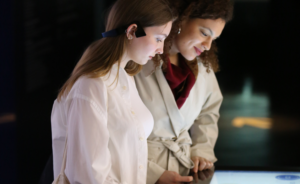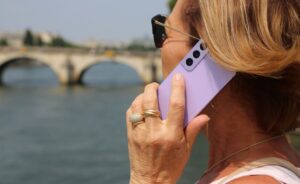Blog

The Importance of Statistics and Visitor Support Systems for Cultural, Industrial and Urban Sites
In the digital age, tourist, cultural and industrial sites must adapt to the new expectations of visitors while optimizing their management. Whether for a museum, a heritage site or an urban route, the use of statistics and visitor support systems makes it possible to improve both the visitor experience and the management of resources. This article explores why these tools are essential and how they can be implemented effectively.
Why Collecting Statistics is Essential
Optimization of Operations and Resources
Statistics make it possible to precisely understand visitor flows and optimize a site’s operations. For example, by collecting data on peak periods, managers can adjust opening hours to better meet demand. In addition, this information makes it possible to
- Reorganize spaces to streamline visitor circulation.
- Effectively allocate staff based on actual needs.
- Plan maintenance periods without disrupting visits.
Understanding Visitor Profile
The collection of demographic data on visitors (age, geographical origin, languages spoken) is essential to refine the proposed offer. Applications and interactive systems can collect information about
- The local, national or international origin of visitors.
- The most requested languages for audio guides or guided tours. This data helps personalize journeys and add language options to better satisfy audiences.
Improve Programming
Thanks to the data collected, it is possible to adapt the programming of events or exhibitions according to the expectations of the public. For example
- Organize thematic visits according to visitors’ interests.
- Plan special events (night visits, specific workshops).
- Offer personalized tours for first-time visitors or art lovers.
Visitor Support Systems: Improving the Experience and Collecting Data
Enriching Visitor Experience
Visitor support systems, such as interactive audio guides, mobile applications or augmented reality devices, bring a new dimension to the visitor experience. They make it possible to offer additional content and personalize the visit according to individual preferences.
Tracking Visitor Behavior
Digital tools also make it possible to track and analyze visitor behavior. For example, by recording
- The time spent in front of each work or point of interest.
- The order of the spaces visited. This information is valuable for adjusting the organization of the site and offering more efficient routes.

Collect Feedback in Real Time
One of the advantages of interactive systems is that they allow instant feedback to be collected. Visitors can rate their experience or answer questionnaires directly from the app, providing qualitative data in addition to quantitative statistics. This helps identify strengths and areas for improvement.
Customization of Courses
Visitor assistance systems make it possible to offer personalized routes based on visitor preferences. For example, an app could suggest an itinerary focused on a city’s architecture for an urban history buff. These tools also make it possible to adapt content according to the visitor’s level of knowledge, making the experience more engaging and immersive.
Setting up a statistics collection system
Define Clear Objectives
Before deploying data collection tools, it is essential to define clear objectives. Managers must ask themselves the right questions: what information is essential? What data will be used to improve management or the visitor experience?
Choosing the Suitable Technologies
Depending on the type of site (museum, heritage site, urban route), different technologies may be more or less suitable. For example, a mobile application with geolocation may be ideal for a city tour, while an audio guide enriched with interactive content will be more relevant for a museum.
Train Staff
Once the tools are in place, it is crucial to train staff in their use and interpretation of the data. This will ensure effective management and maximize the benefits of the technologies deployed.
Specific Applications for Urban and Heritage Sites
Management of Tourist Flows
In an urban context, the collection of statistics makes it possible to optimize the management of visitor flows. By analyzing preferred routes and congestion areas, managers can adjust signage or reorganize access to certain areas.
Valorization of Little-Known Sites
The statistics also make it possible to highlight sites that are less frequented but which are of strong heritage interest. Thanks to personalized recommendations, visitors can discover little-known places that match their interests.
Coordination Between Multiple Sites
When visiting several sites (such as a network of museums or a heritage site), the data makes it possible to optimize opening hours and create suitable multi-site passes. This facilitates the organization of visits and reinforces the attractiveness of the territories.
Towards More Sustainable Tourism Thanks to Data
One of the major challenges of contemporary tourism is the preservation of sensitive sites. The data makes it possible to identify overcrowded sites and propose alternatives to reduce pressure on them. This promotes better heritage conservation and more sustainable tourism.
By analyzing visitor habits, managers can encourage alternative routes to relieve congestion in saturated areas. This strategy not only contributes to improving the visitor experience, but also to protecting sensitive sites against damage due to overcrowding.

Conclusion
The use of statistics and visitor support systems is now essential for tourist, cultural and urban sites. These tools make it possible to optimize site management, better understand visitors and adapt the offer accordingly. For site managers, investing in these technologies represents a real asset to meet the current challenges of the tourism sector and strengthen the attractiveness of places.





